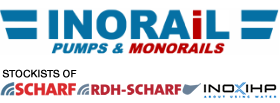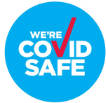Capital Savings of $4m Predicted
A unique Main-gate Controlled Pump Station developed by INORAiL specifically for longwall applications is now being marketed to all operators of new and existing longwalls.
We speak with INORAiL Managing Director Tim Leeson, and he shares why his team are convinced, based on their first-hand experience, that this new innovation will meet with strong demand as it is both cost effective and efficient.
Tim believes it will be positively received, particularly by mines that are marginal on whether they need additional set density.
INORAiL believe that based on the current use of their Main-gate Controlled Pump Station in Australian mines, their system could represent a capital saving of around $4m plus for mine operators.
This is based on the savings that could be achieved on the repair and maintenance costs that go with these longwall projects.
Tim said not having to have additional pumps, hoses and structures in walkways would be seen as a further benefit.
"A third benefit is that they can get performance improvements out of their existing longwall equipment," Tim said, citing recent INOXiHP client experience.
"For cycle times and consistency of pressure you just get a refined, more harmonious system that is hydraulically nicer to everything and is thus better for the life cycle of the equipment.
"Without a doubt there are then flow on benefits in reduced maintenance, repair and downtime costs for the whole system," Tim added
The INORAiL Main-gate Controlled Pump Station employs software and hardware to enable accurate pressure control of pumps 700m away from the sensors for faster moving face roof supports that set against the roof more rapidly at higher loads.
It uses a unique method of individually controlling pumps and was designed as a cost effective alternative to complicated Positive Set or High Pressure Guaranteed systems.
The option INORAiL can now provide hadn't been explored before. People had talked about it but it hadn't been explored and analysed in detail.
Why has this system proven so valuable to INORAiL clients?
The main issue for some projects was that they were not going to achieve adequate set density on the roof support for which the system had a set specification of 345bar.
"Everyone knows no system achieves that. They all achieve much less. Our modelling initially identified we were going to achieve more like 275bar," says Tim.
"We set ourselves a target of a 10% improvement and have, through the development, commissioning and implementation, achieved over 320bara 15% improvement.
"The INORAiL system is fundamentally a systematic approach rather than a piecemeal one. It i s al l about the control of what you' ve already got so you can achieve targets with your existing equipment."
Tim said that ironically the only operational cost impediments had been from hardware his client's mines had added to err on the side of safety, but has since proved unnecessary.
"Working with our clients they asked for additional accumulators at the Pump Station as an insurance policy. Being the first system of its type, we took the conservative approach of fitting this additional hardware," said Tim.
"The accumulators have been bouncing off each other like a big Slinky — a child's toy.
"Now that we know how the system operates we wouldn't do that again, saving on both capital and maintenance costs. It performs with less risk than we expected,th erefore you would have less moving parts."
Tim reports that feedback from his clients show that there is a definite speed improvement, probably in the order of 10% in roof support cycle time, but the most important thing has been the actual set density of pressure it is able to put into the roof.
To find out how this could benefit your mine, please contact Tim Leeson.



